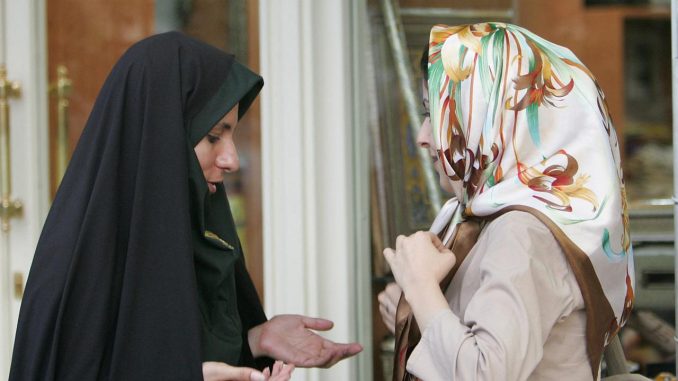
Controversial Hijab Checks Resume in Iran
The Iranian vice police will once again be conducting checks to ensure that women are complying with the dress code, including wearing a hijab. This comes ten months after the tragic death of Mahsa Amini, who was arrested for not properly covering her head. Amidst significant public outcry, the clothing checks were temporarily halted. However, in recent months, advocates for strict Islamic rules have called for the resumption of these controls.
In Iran, the law is based on strict Islamic sharia and mandates that women must cover their hair with a hijab, as well as wear loose clothing that conceals the contours of their bodies.
The vice police will now resume their inspections, targeting women who are deemed to be dressed “inappropriately.” During these checks, violators will initially receive a warning. If they fail to comply, “legal action” will be taken, according to a spokesperson for the vice squad.
Early Fallout: Worldwide Outrage over Amini’s Tragic Demise
In September 2022, 22-year-old Mahsa Amini was arrested in Tehran for not wearing her hijab properly. Subsequently, she was taken to a police station where she allegedly endured physical assault by the officers. Amini lost consciousness, fell into a coma, and passed away two days later.
The news of Amini’s death sparked outrage among women worldwide, leading to widespread demonstrations and protests. Additionally, Iranians themselves took to the streets in massive numbers, often burning their headscarves as a symbol of resistance.
The regime responded to the protests with force, resulting in thousands of arrests and hundreds of deaths. Numerous protesters faced death sentences during trials.
The Contested Hijab Requirement in Iran
The resumption of hijab checks highlights the ongoing controversy surrounding the dress code requirements in Iran. While some advocate for strict adherence to conservative Islamic principles, others argue for greater personal freedom and choice.
The mandatory hijab rule has been a significant point of contention since the establishment of the Islamic Republic of Iran in 1979. Many Iranian women continue to push back against the imposition of this dress code, viewing it as a symbol of oppression and a violation of their basic rights.
In recent years, a prominent movement known as “White Wednesdays” has emerged in Iran, urging women to remove their headscarves in public as an act of peaceful protest. Nevertheless, those participating in such actions face severe repercussions, including arrests, fines, and imprisonment.
International Solidarity with Iranian Women
Amini’s tragic death galvanized women’s rights activists and organizations globally, who expressed their solidarity with Iranian women. Numerous campaigns and initiatives were launched to raise awareness and denounce the compulsory hijab rule.
Supporters called for international pressure on the Iranian government to protect the rights of women and ensure their freedom to choose how to dress. Various human rights organizations have continuingly documented and publicized instances of abuse and discrimination against women in Iran.
While the resumption of hijab checks may be seen as a setback, the strong global response to Amini’s death has shed light on the plight of Iranian women and their ongoing struggle for gender equality and autonomy.
The Intersection of Religion, Culture, and Personal Freedom
The enforcement of the compulsory hijab rule raises broader questions about the relationship between religion, culture, and personal freedom. Different societies and individuals hold diverse interpretations of religious teachings and the appropriate role of religion in public life.
In countries like Iran, where Islamic law forms the basis of the legal system, traditional values are often privileged over individual rights and freedoms. However, this has sparked heated debates about the boundaries of religious observance and the impact on personal autonomy.
Progressive voices within Iran and across the world argue for societies that respect religious diversity while upholding the rights of individuals to exercise personal agency and self-expression. This ongoing discourse highlights the complexities and challenges inherent in achieving a balanced and inclusive approach.
Moving Forward: Fostering Dialogue and Understanding
The resumption of hijab checks in Iran reignites the debate surrounding women’s rights, religious practices, and cultural norms. It also serves as a reminder of the tragic circumstances that led to Mahsa Amini’s untimely death.
Creating space for open and respectful dialogue between different perspectives is essential for fostering understanding and finding common ground. It is through such conversations that societies can navigate the complexities of diverse beliefs and values, ultimately striving for a future that balances individual liberties with communal cohesion.

Be the first to comment